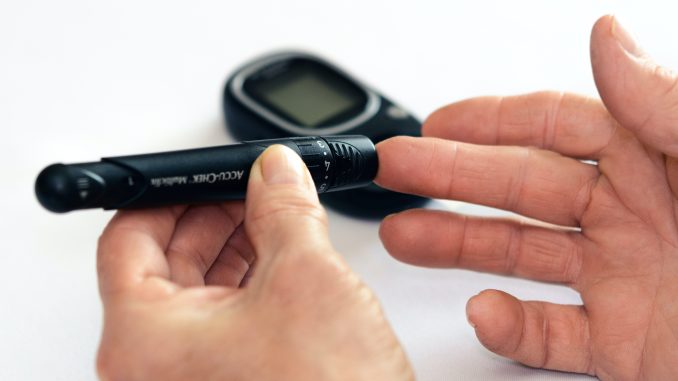
Diabetes is a chronic medical condition that affects millions of people worldwide. It occurs when your body cannot produce enough insulin or use it effectively, resulting in high blood sugar levels. Diabetes can be challenging to manage, but you can live a healthy, happy life with the right tools and strategies.
One of the most critical aspects of managing diabetes is maintaining healthy blood sugar levels. High and low blood sugar can cause serious health problems, so keeping them within a healthy range is crucial. This article will discuss essential tips for managing high and low blood sugar.
Hyperglycemia vs. Hypoglycemia
Before we dive into managing high and low blood sugar, let’s understand hyperglycemia vs. hypoglycemia. Hyperglycemia occurs when blood sugar levels are too high, usually at or above 250 mg/dL. It can cause symptoms such as increased thirst, frequent urination, blurry vision, fatigue, and headaches. If left untreated, hyperglycemia can lead to diabetic ketoacidosis, a life-threatening condition.
Hypoglycemia, on the other hand, occurs when your blood sugar levels are too low, usually below 70 mg/dL. It can cause symptoms such as shakiness, sweating, dizziness, confusion, and difficulty concentrating. In severe cases, hypoglycemia can lead to seizures, unconsciousness, or even death.
Now that we’ve defined hyperglycemia and hypoglycemia, let’s discuss essential tips for managing high and low blood sugar.
Managing High Blood Sugar
If you’re experiencing hyperglycemia, the first thing you should do is check your blood sugar levels. If your levels are above your target range, there are several steps you can take to lower them:
- Take your insulin or diabetes medication as prescribed: If you’re on insulin or diabetes medication, it’s essential to take them as prescribed by your healthcare provider. These medications are designed to help lower blood sugar levels and prevent complications from high blood sugar. If you have trouble keeping up with your medications, consider using an automatic closed-loop insulin pump from Tandem Diabetes. Tandem Diabetes is a leader in insulin pump technology and diabetes management, offering a wide range of products and resources for more accessible and convenient diabetes management.
- Drink water: Water can help flush excess sugar from your system and lower blood sugar levels. Aim to drink at least eight glasses of water daily, or more if you’re exercising or in hot weather.
- Exercise: Physical activity can help lower your blood sugar levels by increasing insulin sensitivity. Most days of the week, aim for at least 30 minutes of moderate-intensity exercise, such as brisk walking, cycling, or swimming.
- Eat a healthy diet: Eating a healthy, balanced diet can help keep your blood sugar levels within a healthy range. Focus on eating plenty of fruits, vegetables, whole grains, lean protein, and healthy fats.
Managing Low Blood Sugar
If you’re experiencing hypoglycemia, the first thing you should do is check your blood sugar levels. If your levels are below your target range, there are several steps you can take to raise them:
- Eat or drink something containing glucose: Eating or drinking things with glucose can help raise blood sugar quickly if your blood sugar levels are low. Examples include fruit juice, soda, hard candy, or glucose tablets.
- Rest: Physical activity can cause your blood sugar levels to drop further, so it’s essential to rest until your levels stabilize.
- Recheck your blood sugar levels: Recheck blood sugar levels to ensure they’ve returned to a healthy range after treating your hypoglycemia.
Preventing High and Low Blood Sugar
Preventing high and low blood sugar is essential for managing diabetes. Here are some tips to help prevent both:
- Monitor your blood sugar levels regularly: Checking your blood sugar levels regularly can help you identify any patterns or changes in your blood sugar levels. Your healthcare provider can help you determine how often you should check your blood sugar levels and identify your target ranges.
- Follow your diabetes management plan: Following your diabetes management plan, including taking your medication as prescribed, monitoring your blood sugar levels, and eating a healthy diet, can help prevent high and low blood sugar.
- Be aware of hyperglycemia and hypoglycemia symptoms: Knowing the signs of hyperglycemia and hypoglycemia can help you take action quickly if your blood sugar levels are out of range. Remember that some people may not experience any symptoms, so monitoring your blood sugar levels is essential.
- Communicate with your healthcare provider: If you’re experiencing high or low blood sugar levels, it’s essential to communicate with your healthcare provider. They can help you adjust your medication or lifestyle habits to manage your diabetes better.
Managing high and low blood sugar is crucial for living a healthy life with diabetes. By following these essential tips, you can keep your blood sugar levels within a healthy range and prevent complications from hyperglycemia or hypoglycemia. Remember to check your blood sugar levels regularly, follow your diabetes management plan, and communicate with your healthcare provider. With the right tools and strategies, you can successfully manage your diabetes and live a happy, healthy life.
